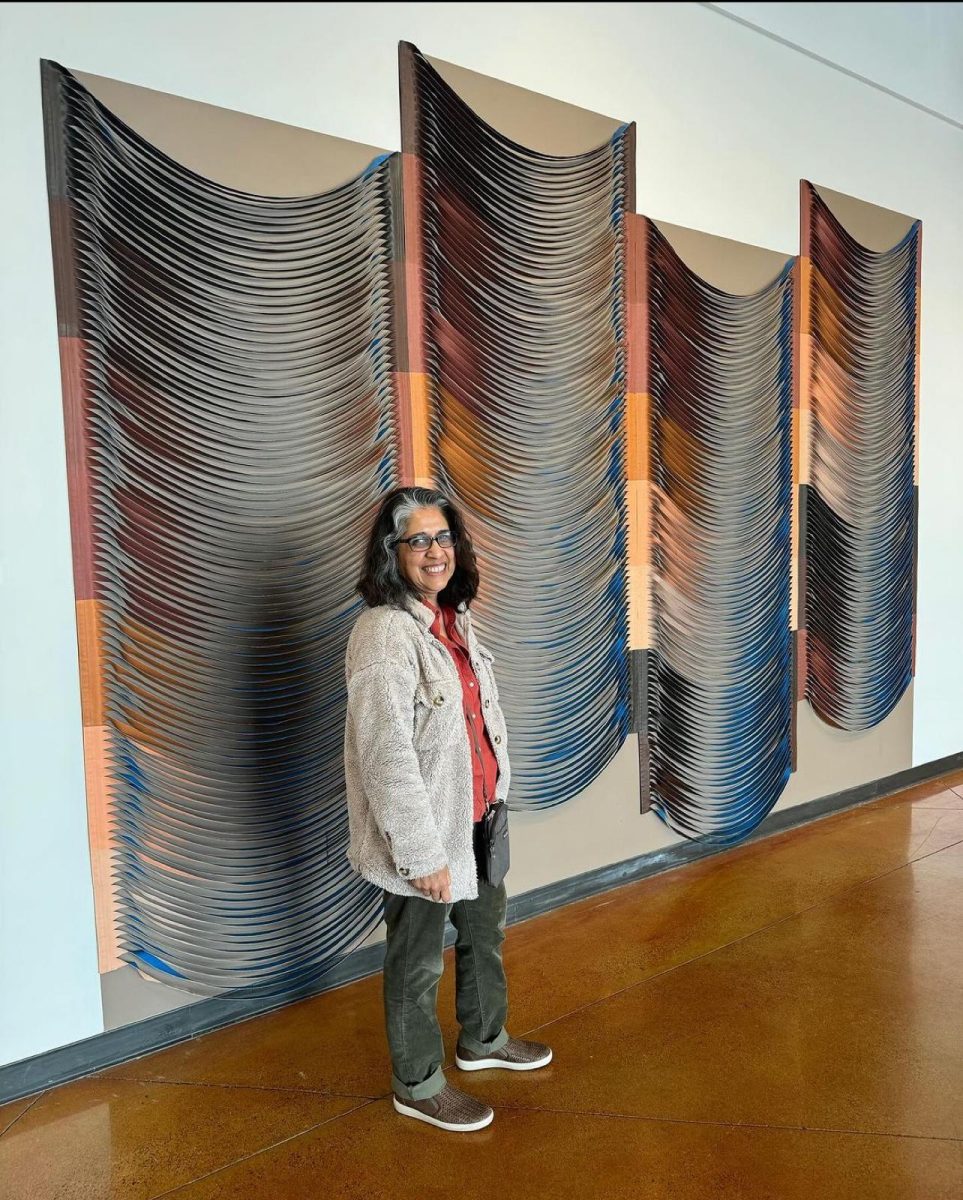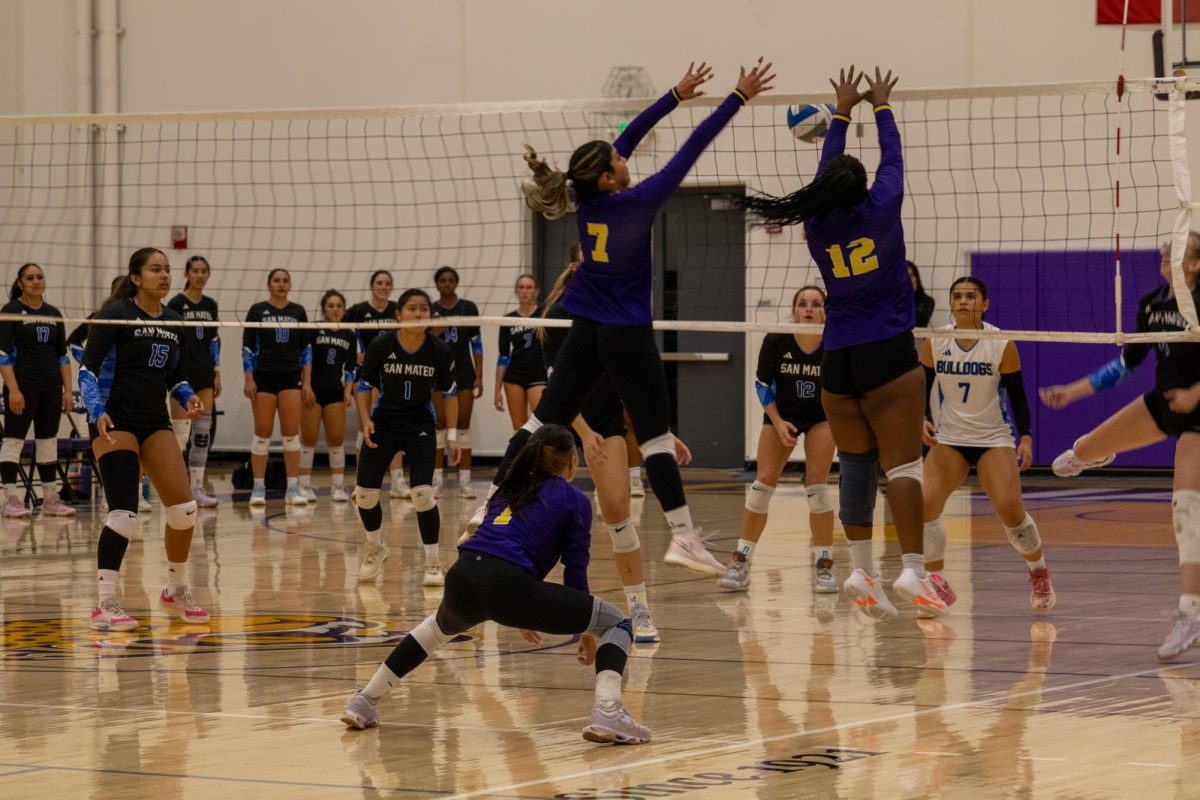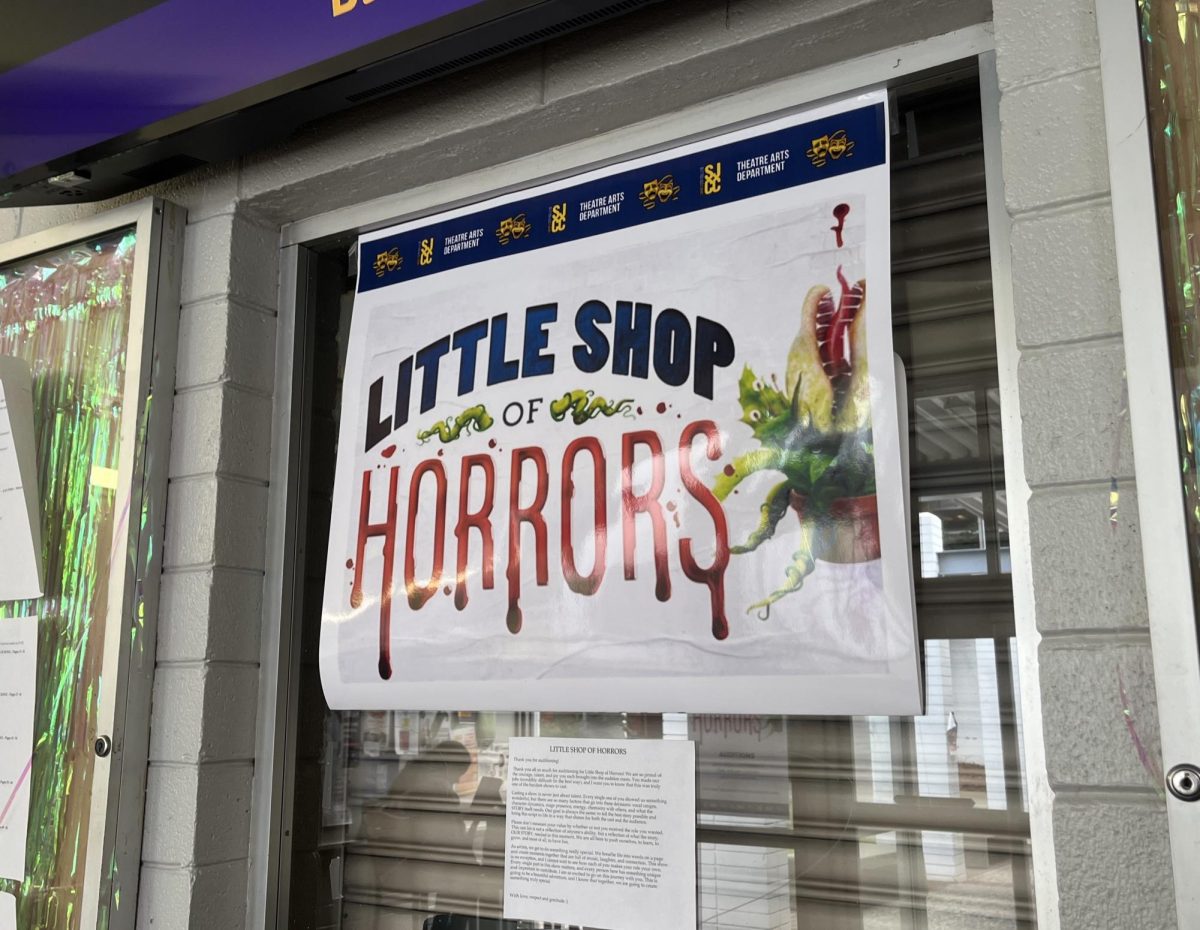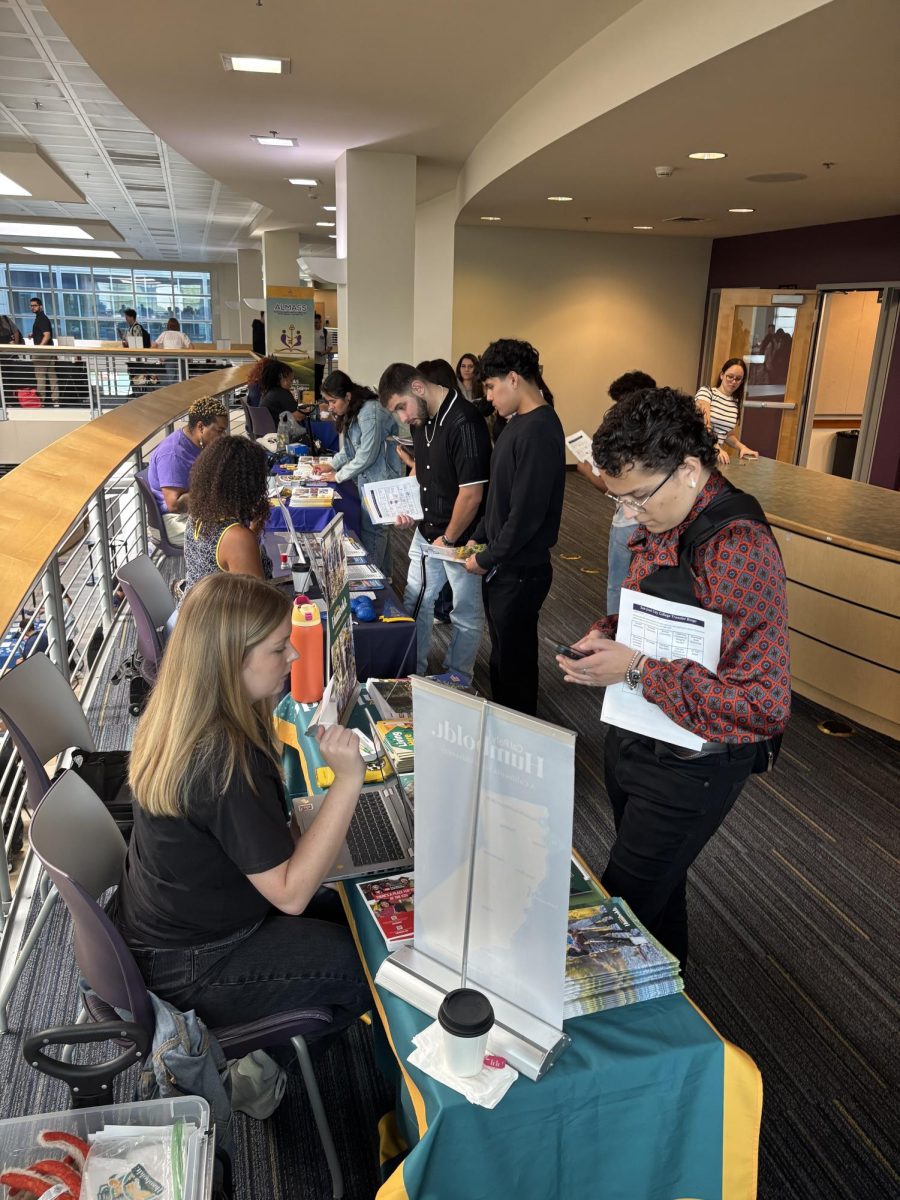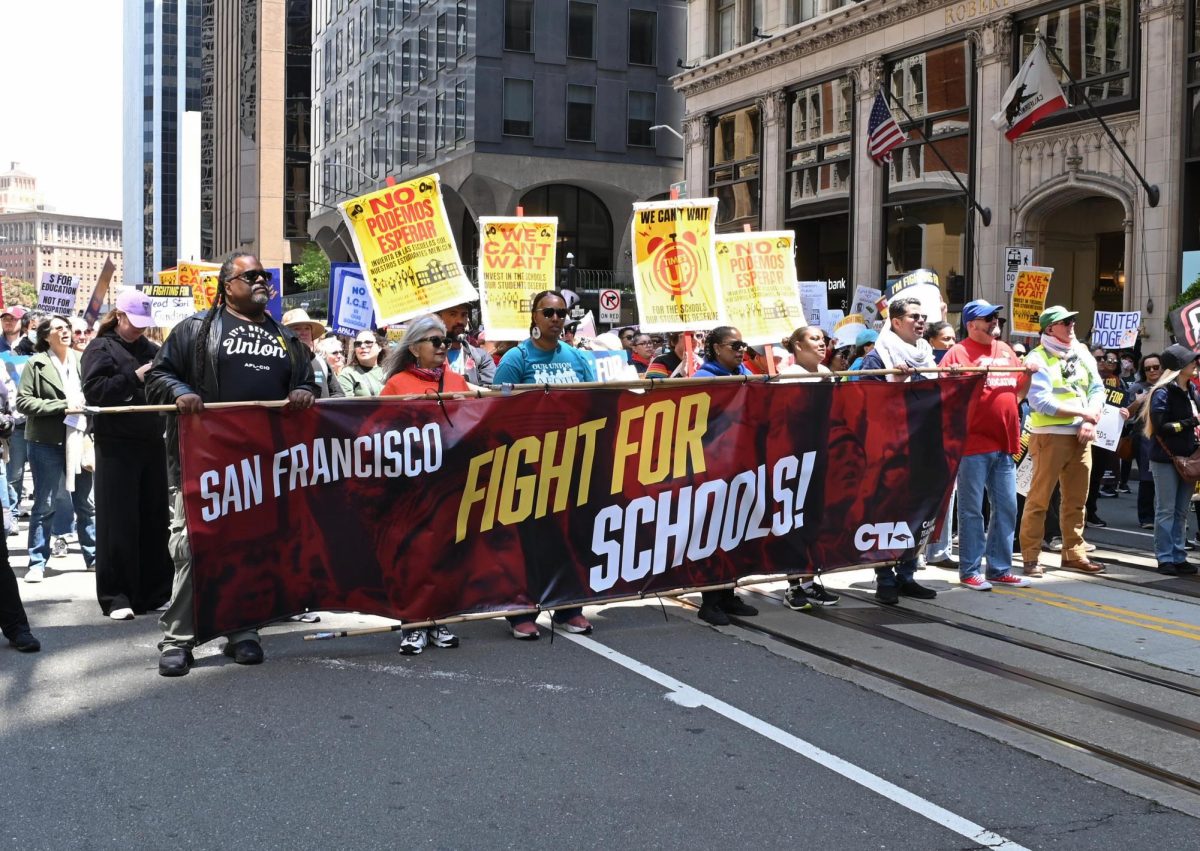Pilar Agüero, a mixed media artist focuses on the intense earthy smells and soft leather textures in front of her, she weaves small strips of pink leather to create abstract shapes that emerge from a wooden canvas painting, while waiting for people to enter the gallery and view her artwork. Her solo exhibition was displayed during Women’s History Month at Carmen Castellanos Gallery at San Jose City College.
This Mexican American artist, ever referencing her roots, uses her work to pose questions about racism and social hierarchies. Specifically, she is interested in illuminating social gap s influenced by skin tone.
“I’m really interested in ideas of how people think about their skin tone because I feel that there’s a lot of racism that’s based on skin color,” Agüero said.
This idea of questioning racism, she said, has always been present. Since she was a child, she witnessed social injustices imposed on her parents. However, it was a package of crayons that inspired her to create her work called Multicultural Crayons.
“I saw a little girl using them, and I thought, what’s this?” Agüero said when describing the moment she first saw a pack of “skin tone” themed crayons. “I was really fascinated that they had all kinds of skin colors in one pack. So, I bought hundreds of these packs, melted them, and then made paths (shoe molds) of my daughter’s feet each in each color.”
As a part of her artwork to explore colorism, Pilar created a piece called Refurbished lasts from my father’s collection. In this piece she includes seven pairs of wooden shoe molds of the same size, painted with melt crayons emulating multiracial feet in different colors.
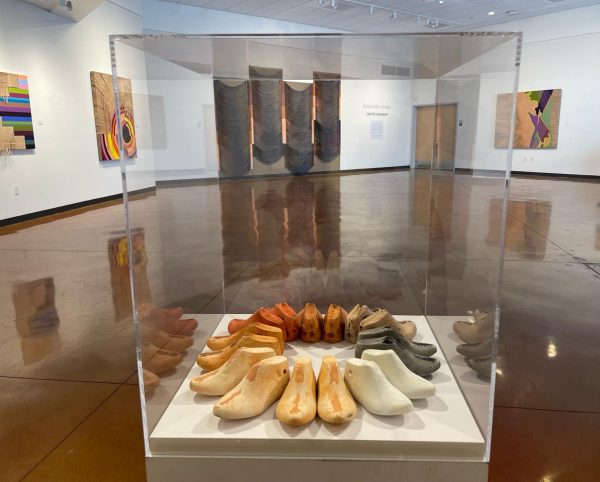
While walking through the gallery, Ruth Medina, a SJCC student, stops to look closely at the piece called Plata Lace, which called her from the other side of the gallery. For the student, this shiny piece demonstrated the beauty of humanity.
“I like the natural leather at the top and then the darker blue, velvet looking texture at the bottom also provides to me a sense of lightness. Sense of humanity at the top and at the bottom. There is a sense of this almost like we do still have an opportunity to not know what can be before us. I really like that,” Medina said.
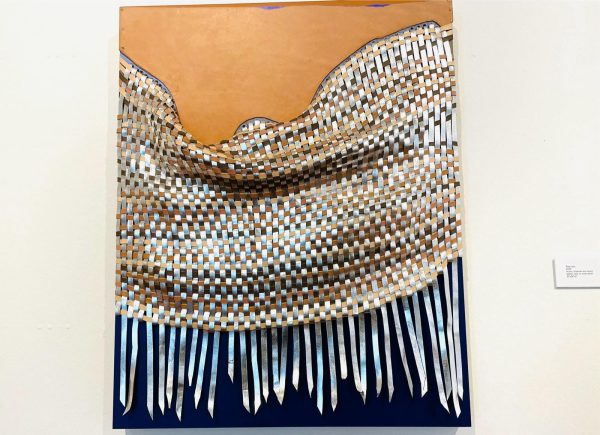
Pilar Agüero seeks to form a connection between her art and its viewers by referencing textiles used in mesoamerican indigenous cultures. Preserving indigenous traditions through her art is how Pilar Agüero pays tribute to her parents, who taught her the art of weaving as part of the family business.
“Colonization disseminated a lot of native cultures in this country (…) I do want to connect more to my indigenous roots. So, doing these kinds of artworks makes me excited, happy and proud,” Agüero said.
Absorbed by the color of the art, Lilia Agüero, Pilar’s sister, a student of Traditional Chinese Medicine analyzes a piece called Curves: Pinks, Peaches, Purples, in it, she perceives the personality of her father, a man who took risks, and was known as a creative adventurer.
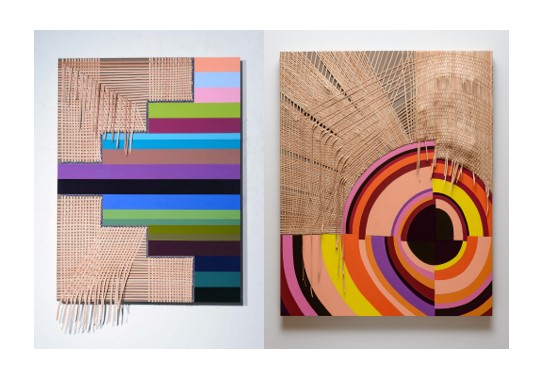
In another work, Pachuco: Purples & Blues, textiles are organized and straight lines guide the eye. Lilia Agüero senses her mother, whose personality reflects the structured elements of the work. Although for the artist, impregnating the personality of her parents into her pieces was not intentional.
“I could see how that could be an inspiration for me later. There is something about order and disorder that I’d like to see. Juxtaposing these two ideas, these two materials, these two ways of working. Sometimes it does have to be a little bit like the leather, chaotic and like a painting, more orderly,” Agüero said.
Pilar Agüero will be debuting five new pieces from her Crafted Continuum series in a group show at Patricia Sweetow Gallery in Los Angeles on April 6 to May 18.
To know more about her future exhibitions and artwork check out her blog: www.pilaraguero.com

